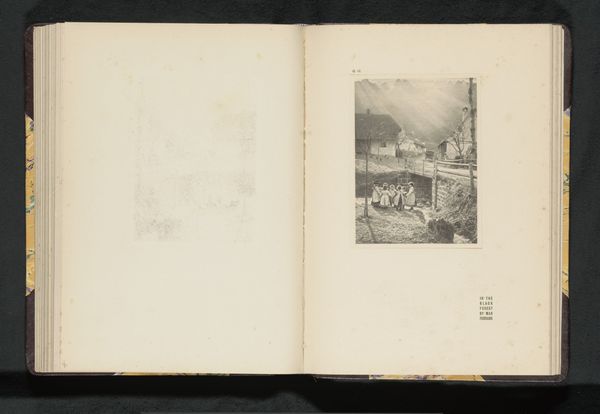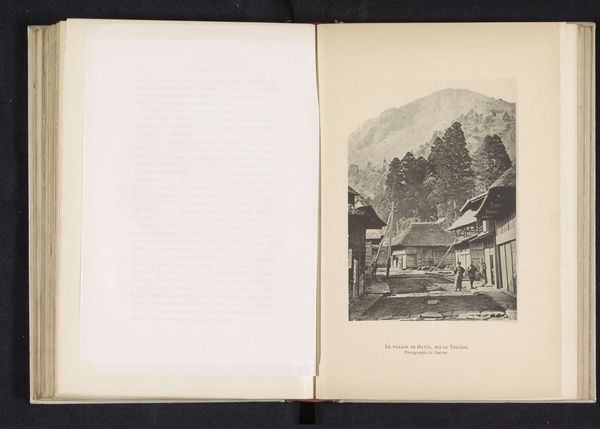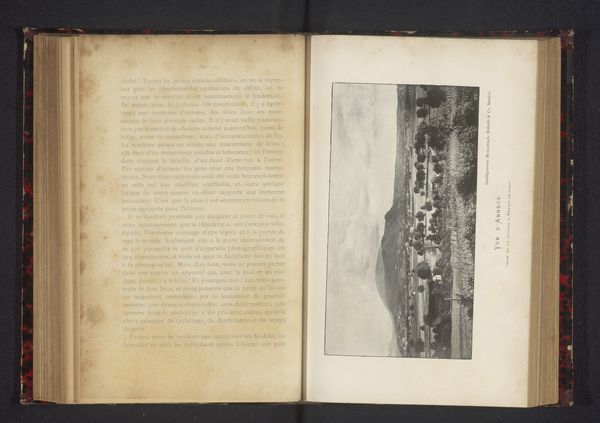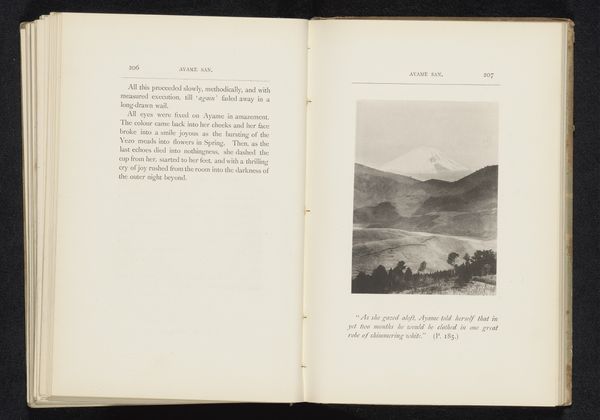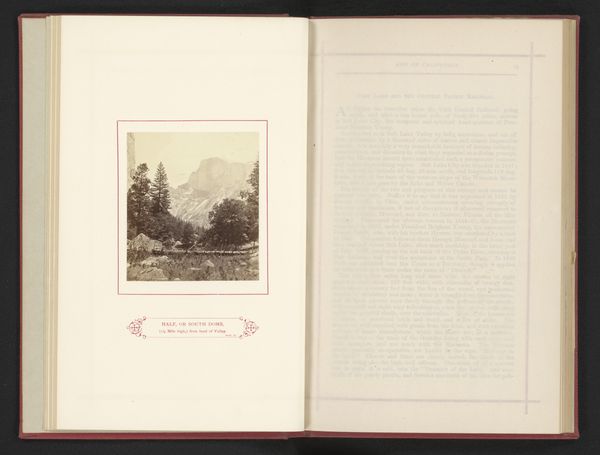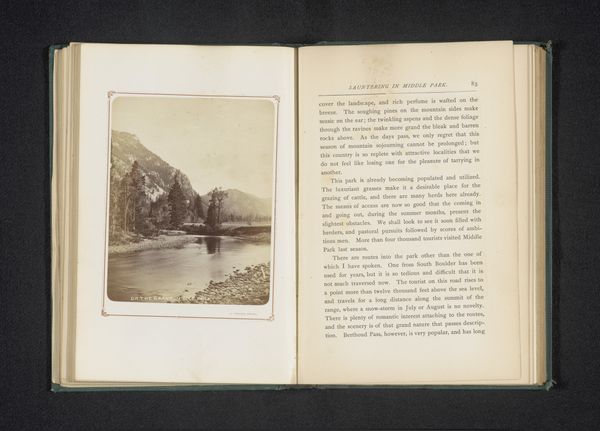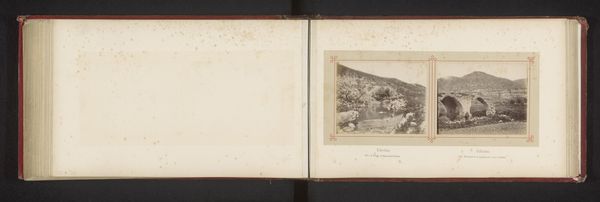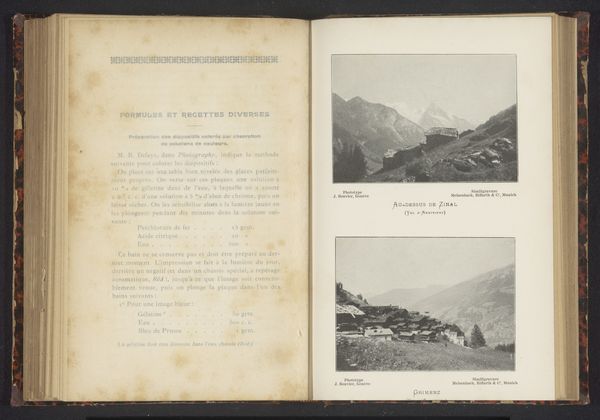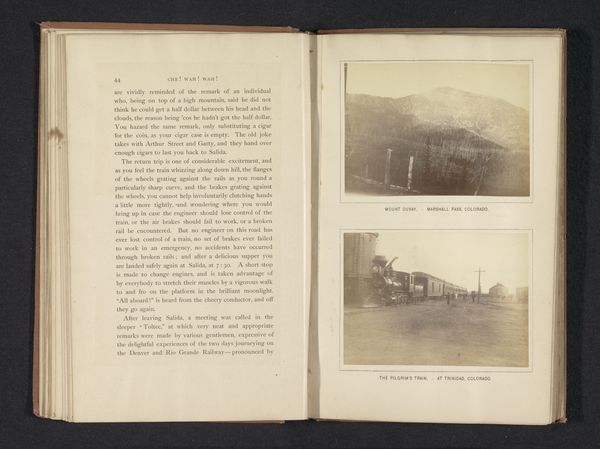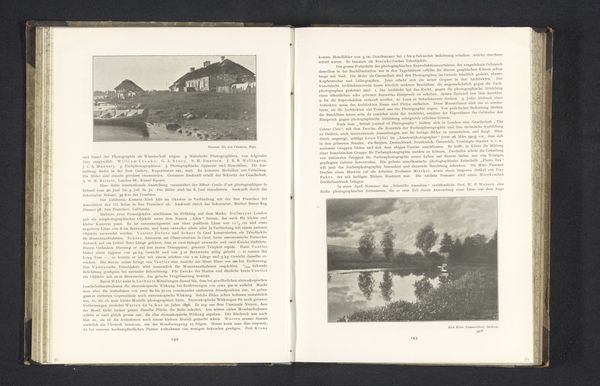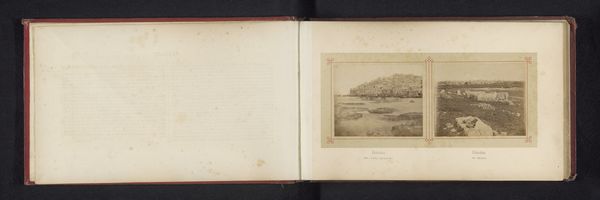
print, photography, albumen-print
#
pictorialism
# print
#
landscape
#
photography
#
coloured pencil
#
albumen-print
Dimensions: height 170 mm, width 109 mm
Copyright: Rijks Museum: Open Domain
Editor: Here we have “Plaat met een gezicht op de Walliser Alpen en de Alpen in Vaud” - that's "View of the Valais Alps and the Alps in Vaud" in English - dating from before 1895, attributed to R. Demole. They’re albumen prints displayed in an open book, capturing different alpine landscapes. What I find striking is the contrast between the crisp photographic detail and the aged texture of the book itself. What's your perspective on this work? Curator: Thank you, the framing within a book certainly influences our reading of these images. We need to consider not just what the photographs depict, but what they represent within this specific cultural object. How does situating these landscapes within a book change their meaning compared to, say, a framed print on a wall? Editor: I guess the book makes it more of a personal journey, something intimate and perhaps didactic? Curator: Precisely. The book format infuses it with notions of knowledge dissemination, a specific, potentially colonial, gaze being cast upon the landscape. Who was this book for? What narrative were these images supporting? Were they reinforcing specific ideas about Swiss identity, progress, or even ownership of the land at a time when these national and cultural identities were highly contested and politicized? Pictorialism often aestheticized landscapes, which can veil the economic realities behind these landscapes, like tourism, or extraction of resources. Editor: So, it’s not just pretty pictures; it's about power dynamics. Is that a typical element to observe? Curator: Indeed. It requires we think about who benefits from these portrayals and whose stories are potentially erased in these visions of an unspoiled and idealized Alpine world. Considering these landscapes not as passive representations, but as active participants in constructing ideologies of place and belonging. Editor: I never would have thought of it that way; seeing beyond the surface and considering the power structures embedded within the landscape tradition is pretty impactful. Curator: It opens up fascinating avenues of inquiry, right? Understanding the historical forces shaping both the production and reception of landscape imagery.
Comments
No comments
Be the first to comment and join the conversation on the ultimate creative platform.
